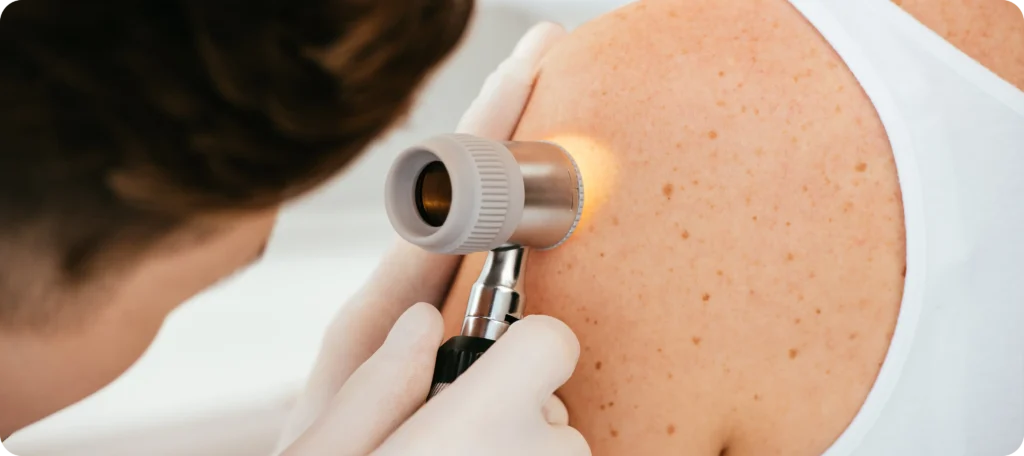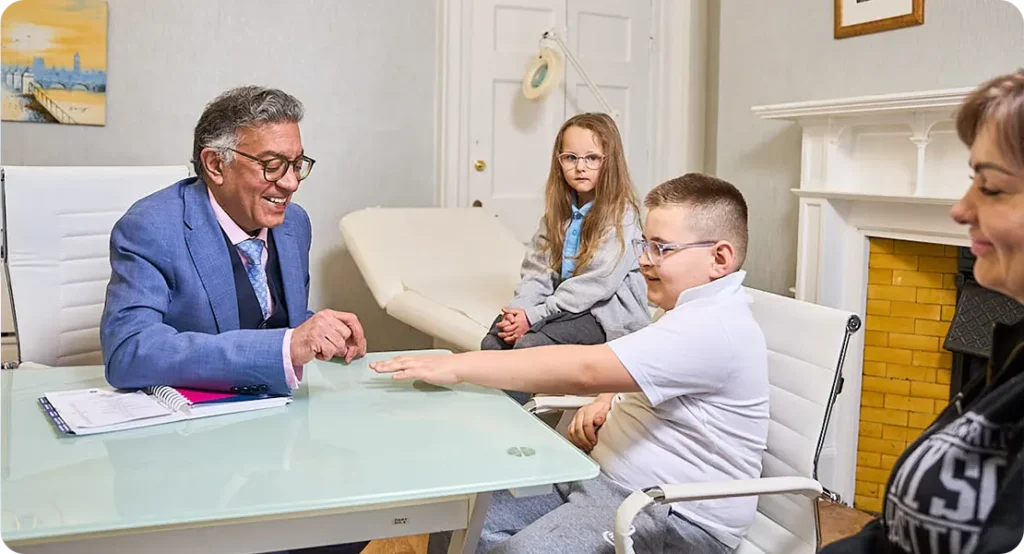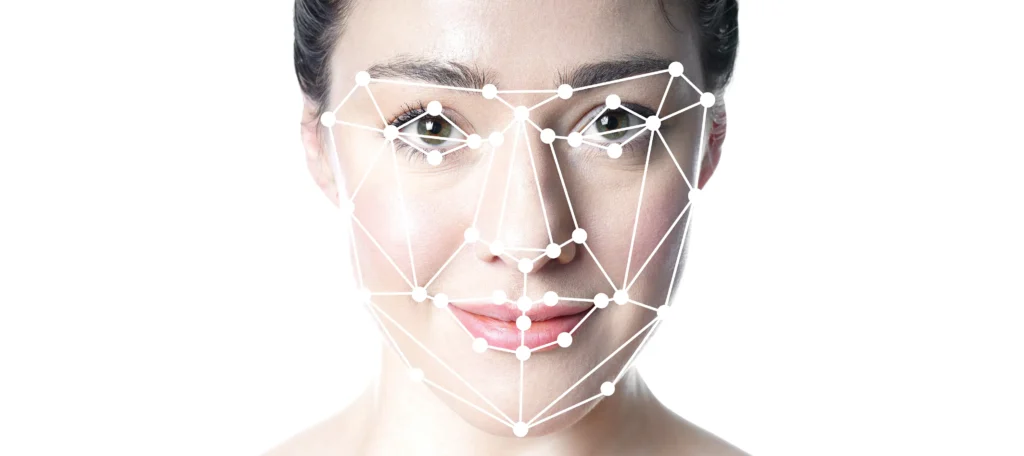It’s easy to see the appeal. You’ve got a rash, a mole that’s changed shape, or maybe a breakout that’s not going away. You don’t have time to see a doctor, and your phone’s already in your hand. Just snap a photo, upload it to an app, and boom—an instant “diagnosis”. Convenient, right? Maybe even futuristic? Not quite.
While online skin assessments and AI-powered apps are becoming more common, they come with a long list of limitations—and some can be downright dangerous if you rely on them too much. In this article, we’ll explore why online skin diagnosis can’t match the value of a real, in-person consultation with a trained dermatologist.
The Rise of Online Skin Tools: Convenience at a Cost
We live in a world where speed and convenience are king. Want food? Tap an app. Need a taxi? Tap an app. Have a skin issue? Well, now there are apps for that too. These platforms promise quick results and even claim to use artificial intelligence to evaluate your skin problems.
Some platforms ask you to answer a few questions, upload a photo, and within minutes, you’re given a probable diagnosis and a list of products or medications to try. For minor concerns, this may sound like a good starting point. But is it?
The main issue is this: skin conditions are incredibly nuanced. They often require not just a look, but a feel, a discussion, a history, and sometimes additional testing. Online platforms, no matter how advanced they claim to be, are not built to handle that level of complexity. What you gain in convenience, you often lose in accuracy and safety.
Even worse, some of these platforms make confident-sounding recommendations based on limited information. That can lead to a false sense of reassurance—or unnecessary panic. Without proper clinical oversight, a harmless mole might be misclassified as dangerous, or a serious condition might be completely missed.
Why Photos Alone Aren’t Enough for Diagnosis
You might assume that a high-resolution smartphone photo is all it takes to diagnose a skin issue. After all, modern cameras can capture astonishing detail—so surely a dermatologist or an AI could assess the problem from an image alone? The truth is, a photo is only one piece of the puzzle. Skin conditions often involve multiple sensory and contextual cues that simply can’t be conveyed through a picture. Relying solely on imagery risks missing vital information that could change the diagnosis or treatment entirely.
Lighting can dramatically alter how a skin lesion appears. A mole under bright daylight can look very different in the soft yellow hue of indoor lighting. Shadows may obscure texture, while glare from oily skin or sweat can give a misleading impression of colour or elevation. Additionally, differences in skin tone can affect how redness, pigmentation, or rashes appear in a photo, which is especially problematic for people with darker complexions where subtleties might be missed or misinterpreted.

A real consultation allows the dermatologist to manipulate the skin—to press it, stretch it, and feel its consistency. They may also observe how a lesion changes under specific lighting or tools like a dermatoscope. Texture, temperature, firmness, and even how the skin reacts to touch all contribute to a more complete and accurate picture. None of these physical attributes can be understood through even the most expertly taken photograph.
Beyond that, a photo doesn’t tell the story. It can’t explain when the condition started, whether it’s changed, if there’s pain or itching involved, or whether previous treatments have helped. These details are crucial for diagnosis. Two rashes may look identical but be caused by entirely different factors—one allergic, the other autoimmune. In-person diagnosis brings context, clinical experience, and physical examination together, making it far more reliable than any image-based evaluation.
The Danger of Missed Diagnoses
One of the biggest concerns with online-only skin assessments is the potential to completely overlook serious medical issues. Some skin cancers, like melanoma or squamous cell carcinoma, may initially appear subtle or benign. Without the trained eye of a dermatologist to spot early warning signs—like asymmetry, irregular borders, colour variation, or changes over time—these life-threatening conditions can easily slip through the net when assessed by an algorithm or even a non-specialist.
Another problem lies in the design and governance of these online diagnostic tools. Many are built using generic image databases that don’t cover the full diversity of skin types or rare conditions. Some are not developed in consultation with medical professionals at all, which means they might rely on simplistic pattern recognition instead of medically sound frameworks. Worse still, many of these tools operate outside of proper regulatory frameworks, which means there’s no guarantee of accuracy, accountability, or even basic safety standards.
When a diagnosis is missed, the consequences can be significant. Skin cancer caught early often has excellent outcomes. But delays in diagnosis—even by a few weeks or months—can mean the difference between a small surgical excision and more aggressive treatments like chemotherapy, immunotherapy, or wide-area excision. And it’s not just cancer—conditions like hidradenitis suppurativa or severe psoriasis also require early intervention to prevent long-term scarring, pain, and emotional distress.
False reassurance is also a concern. If an app incorrectly labels a dangerous lesion as “nothing to worry about”, the user might postpone seeing a specialist. This false sense of security can delay appropriate care and, in some cases, lead to irreversible damage. In contrast, a dermatologist won’t just make a spot judgment—they’ll often recommend monitoring, follow-ups, or further testing when there’s any uncertainty, providing a far safer and more reliable route to diagnosis.
Human Interaction Is Still Vital
It’s easy to forget that medicine isn’t purely about data or technology—it’s a human discipline. When you meet a dermatologist in person, you’re not just receiving a diagnosis—you’re entering a relationship of care and trust. You can describe your symptoms in your own words, ask questions, and receive feedback in real-time. That two-way communication is something no app or online portal can replicate effectively.
A skilled dermatologist doesn’t just listen to what you say—they observe your body language, your emotional state, and even non-verbal cues that may suggest anxiety, discomfort, or concern. These subtle signals can inform their approach and help shape a more compassionate, tailored response. In contrast, online tools are often clinical and cold, offering generic advice without any sensitivity to the individual behind the condition.

The reassurance factor is also critical. Many patients worry about what their skin issues might mean—whether it’s cancer, scarring, or something contagious. Being able to talk face-to-face with a medical professional who can explain things clearly, answer follow-up questions, and map out a treatment plan helps to reduce fear and anxiety. That human touch fosters confidence in the care process, which is just as important as the clinical outcome.
Moreover, dermatologists can adapt on the fly. If something unexpected is discovered during an examination—a second suspicious mole, or a skin condition in a location the patient hadn’t mentioned—it can be addressed immediately. Online tools are typically rigid, working within pre-set frameworks or image upload limits. They simply cannot match the flexibility or attentiveness of a human consultation.
The Pitfalls of Self-Treatment Based on Online Advice
Once an online tool provides a diagnosis—accurate or not—the next step is often a prompt to buy something. Whether it’s over-the-counter creams, medicated shampoos, or oral supplements, many platforms have commercial incentives tied to their recommendations. This can create a conflict of interest where sales take precedence over proper medical guidance, encouraging users to self-treat without understanding the risks involved.
One immediate problem with this is wasted money. Many people end up spending on treatments that don’t work because they’re treating the wrong condition in the first place. For example, using antifungal cream on eczema can irritate the skin further, while applying hydrocortisone to a fungal infection may worsen it by suppressing the immune response. Without an accurate diagnosis, even the most effective treatments can backfire.
There’s also the very real risk of harm. Potent treatments like corticosteroids, topical retinoids, or medicated acne solutions can cause significant side effects if misused. People might use too much, apply them for too long, or mix incompatible products, leading to thinning skin, burns, increased pigmentation, or even allergic reactions. A dermatologist provides crucial oversight to ensure that treatments are safe, appropriate, and properly monitored over time.
Perhaps the most dangerous issue is that self-treatment can mask symptoms without actually resolving the underlying problem. A cream might make a rash temporarily fade but not address the root cause. This can delay real treatment, giving a false impression that the condition is improving when it may actually be progressing beneath the surface. Only a trained professional can provide the kind of ongoing evaluation needed to track progress and make informed changes to the care plan.
Context Matters: Skin Conditions Aren’t Isolated
Your skin is part of a complex system. Skin symptoms often reflect what’s going on elsewhere in the body. That’s why dermatologists take a full medical history—they want to know about medications, allergies, family history, and other conditions that might be influencing what’s happening on your skin.
Online platforms often fail to take this holistic view. They treat skin issues in isolation, which can lead to tunnel vision and poor outcomes. For instance, what looks like eczema could be a symptom of an autoimmune condition. Or acne could be linked to hormonal imbalances that need deeper investigation.
In-clinic visits also allow for follow-up tests—biopsies, blood work, or referrals to other specialists—that are crucial for proper diagnosis and treatment. Without these tools, an online assessment is little more than an educated guess.
The Role of AI in Dermatology (And Where It Falls Short)
Let’s be clear: AI has a place in dermatology. In fact, dermatologists themselves are exploring how AI can help with pattern recognition, data analysis, and triaging patients more efficiently. But the key word here is “help”.

AI should support dermatologists—not replace them. When used appropriately, it can flag suspicious lesions, streamline patient intake, and even assist in tracking treatment progress over time. But it is not a substitute for years of training, clinical judgement, and real-time patient interaction.
And as of now, most dermatology AI tools are trained on limited datasets that don’t fully represent the diversity of human skin. They often underperform on darker skin tones, rare conditions, or mixed presentations. This creates a serious equity issue—and a real clinical risk.
What a Proper Dermatology Appointment Offers That an App Doesn’t
Let’s break down what happens during a typical face-to-face dermatology appointment:
- Visual and tactile examination: Not just how it looks, but how it feels.
- Full skin check: Not just the spot you’re worried about—everything is looked at, often picking up issues you hadn’t noticed.
- Medical history and context: Understanding the full picture of your health.
- Professional imaging: Dermoscopy and other techniques that can magnify and assess deeper structures.
- A personalised treatment plan: Based on your unique skin type, history, and goals.
- Follow-up and monitoring: Adjusting treatments over time and watching for changes.
Now compare that to a three-minute interaction with an app.
When Online Tools Might Still Have a Role
That said, not all online tools are bad. They can be helpful in a limited way, especially in triage or monitoring situations. For instance, if you live in a remote area, online triage may help you determine whether something is urgent.
Some dermatology clinics now offer hybrid models—where patients send images ahead of an appointment or have an initial video consultation before a full in-person follow-up. These setups work because they’re backed by trained professionals and include face-to-face care at some point.
So yes, technology has a role. But it should never be the entire picture. At best, it’s a stepping stone—at worst, it’s a shortcut that cuts too deep.
Final Thoughts: Don’t Trade Accuracy for Speed
It’s tempting to go with the fastest option—especially when your skin is acting up and you’re desperate for answers. But when it comes to your health, speed should never come at the cost of accuracy, safety, or personalised care.
A face-to-face visit with a dermatologist offers far more than just a look at your skin—it’s a comprehensive, collaborative, and medically sound experience that protects your wellbeing today and into the future.
So, if something doesn’t look or feel right, skip the app and book a proper consultation. Your skin—and your peace of mind—deserve nothing less. If you wish to have a private consultation with an expert dermatologist in London, you can get in touch with us here at The London Dermatology Centre.

References
- Mahajan, R. and Handa, S. (2013). Dermatology in the era of smartphones: an update on mobile applications. Indian Journal of Dermatology, Venereology and Leprology, 79(3), pp.371–380. Available at: https://ijdvl.com/issue/2013-79-3/
- Ngoo, A., Finnane, A. and Soyer, H.P. (2018). Efficacy of smartphone applications in high-risk pigmented lesions. Australasian Journal of Dermatology, 59(2), pp.101–106. Available at: https://pubmed.ncbi.nlm.nih.gov/28240347/
- Janda, M., Loescher, L.J. and Soyer, H.P. (2020). Digital technology for skin cancer early detection: A review of diagnostic accuracy, comparative studies, and usability of mobile applications. European Journal of Cancer Care, 29(5), e13220. Available at: https://experts.arizona.edu/en/publications/advances-in-skin-cancer-early-detection-and-diagnosis(University of Arizona)
- Thissen, M.R.T.M., Udrea, A., Hacking, M. and Stuiver, M.M. (2021). Teledermatology in times of COVID-19: Emerging practices and potential pitfalls. Clinics in Dermatology, 39(6), pp.829–835. Available at: https://pubmed.ncbi.nlm.nih.gov/31960407/(PubMed)
- Du-Harpur, X., Watt, F.M., Luscombe, N.M. and Lynch, M.D. (2020). What is AI? Applications of artificial intelligence to dermatology. British Journal of Dermatology, 183(3), pp.423–430. Available at: https://academic.oup.com/bjd/article/183/3/423/6748151(King’s College London, Oxford Academic)
